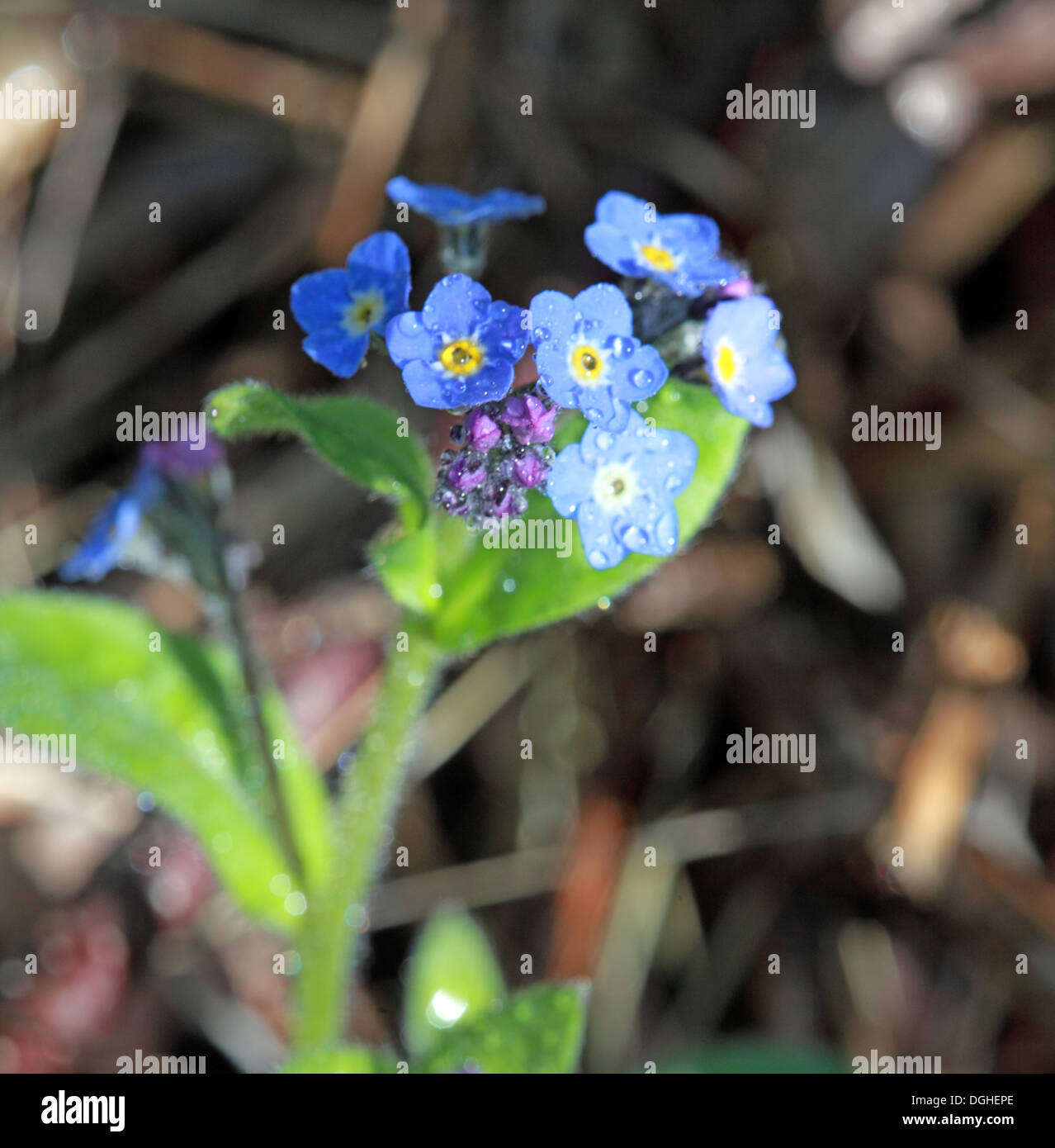Wood ForgetMeNot, Spring, English wood, Grappenhall, Warrington,England,UK

Image details
Contributor:
Tony Smith / Alamy Stock PhotoImage ID:
DGHEPEFile size:
40.8 MB (1 MB Compressed download)Releases:
Model - no | Property - noDo I need a release?Dimensions:
3744 x 3808 px | 31.7 x 32.2 cm | 12.5 x 12.7 inches | 300dpiDate taken:
2 May 2013Location:
Grappenhall, Warrington, Cheshire, England,UKMore information:
Although there may be up to 100 species in the genus, only those native to the Northern hemisphere are commonly called Forget-me-not. Many are popular in gardens, preferring moist habitats. In areas where they are not native, they have frequently escaped to wetlands and riverbanks. Myosotis sylvatica (wood forget-me-not) Forget-me-nots may be annual or perennial plants. Their root systems are generally diffuse. Their seeds are found in small, tulip-shaped pods along the stem to the flower. The pods attach to clothing when brushed against and eventually fall off, leaving the small seed within the pod to germinate elsewhere. Seeds can be collected by putting a piece of paper under the stems and shaking the seed pods and some seeds will fall out. It is possible that the genus originated in the Northern Hemisphere although it is equally possible that evolution occurred in New Zealand. One or two European species, especially the wood forget-me-not, Myosotis sylvatica have been introduced into most of the temperate regions of Europe, Asia and the Americas. Forget-me-nots are used as food plants by the larvae of some Lepidoptera species including the setaceous Hebrew character. The Chatham Islands forget-me-not belongs to a related genus, Myosotidium.